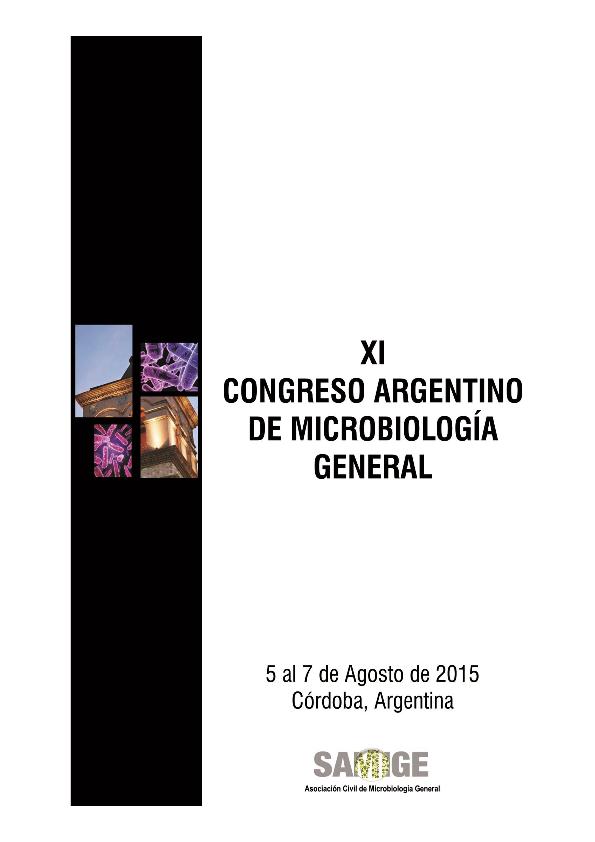Mostrar el registro sencillo del ítem
dc.contributor.author
Rasuk, Maria Cecilia

dc.contributor.author
Ordoñez, Omar Federico

dc.contributor.author
Soria, Mariana Noelia

dc.contributor.author
Farias, Maria Eugenia

dc.date.available
2023-03-02T15:05:33Z
dc.date.issued
2015
dc.identifier.citation
Extreme-halophiles: their role in the arsenic biogeochemical cycle; XI Congreso Argentino de Microbiología General; Cordoba; Argentina; 2015; 1-3
dc.identifier.uri
http://hdl.handle.net/11336/189405
dc.description.abstract
Biofilms, mats and microbialites dwell under extreme environmental conditions (high salinity, extreme aridity, pH and arsenic concentration) in the Argentinean Puna and the Atacama Desert. Microbial communities inhabiting those ecosystems are poorly known. Arsenic metabolism is proposed to be an ancient mechanism in microbial life. Besides, some bacteria and archaea are not only able to use detoxification processes to grow under high arsenic concentration, but also, some of them are able to exploit arsenic as a bioenergetic substrate in either anaerobic arsenate respiration or chemolithotrophic growth on arsenite. Only four aioAB coding for arsenite oxidase and two arrA coding for arsenate reductase sequences from haloarchaea were previously deposited in the NCBI Database, but have not been reported in the literature. The arrA arsenate reductases are reliable indicators of anaerobic As (V) respiration and catalyze the electron transfer to the As (V) terminal acceptor in dissimilatory arsenatereducing prokaryotes (DARPs). In this work, we are presenting our first steps in the study of the arsenic biogeochemical cycle in these ecosystems. Thus, the aim of this study was to isolate and to study the arsenic metabolism genes of the isolated extreme halophile microorganisms as well as to test the growth in minimal medium using different carbon sources. Mats and microbialites samples were taken from the water’s edge of Laguna Tebenquiche, Laguna Brava (Salar de Atacama, Chile) during December 2012 and from gaylusite crystals (Laguna Diamante) in August 2014. Samples were enriched and plated in WS medium supplemented with arsenic (AsIII 0.5mM and AsV 20mM). Arsenite oxidase (aioB) and Arsenate reductase (arrA) primers specific for haloarchaea were designed using PrimerProspector software. Selected primers were aioB-1190F (5’-GCTCMTSACCGGCAGCGTCG-3’), aioB-1507R (5’-YGATCTCGTCGATGTCGGCG-3’), arrA-417F (5’CCCGAGTTCGAGCCSATCTC-3’) and arrA-614R (5’GCRCAGATCGMGCTGTGGGA-3’). In order to identify the isolates we used Archaea-specific primers for 16S rDNA gene amplification: 344F (5´- ACG GGG YGC AGC AGG CGC GA-3´) and 915R (5´- GTG CTC CCC CGC CAA TTC CT -3´). Fragments of 577 bp, 317pb and 197pb were obtained from 16S rDNA, aioB and arrA genes respectively. Universal primers 27F and 1492R were used to amplify 16S rDNA in bacterial isolates. 25 isolates belonging to Archaea and Bacteria Domain were obtained; they are related to the Phylum Euryarchaeota, Firmicutes and Proteobacteria. AioB and arrA genes were found in most of the isolates and DNA from the samples (mats, microbialites and biofilm). The best carbon source tested was pyruvate and acetate, being pyruvate better in all cases. Promising results were obtained in the search of organisms able to use arsenic in their bioenergetic metabolism. More studies are underway to try to better understand these very interesting systems.
dc.format
application/pdf
dc.language.iso
eng
dc.publisher
Sociedad Argentina de Microbiología General
dc.rights
info:eu-repo/semantics/openAccess
dc.rights.uri
https://creativecommons.org/licenses/by-nc-sa/2.5/ar/
dc.subject
HALOFILOS
dc.subject
EXTREMOS
dc.subject
CICLO BIOGEOQUIMICOS
dc.subject
ARSENICO
dc.subject.classification
Biología Celular, Microbiología

dc.subject.classification
Ciencias Biológicas

dc.subject.classification
CIENCIAS NATURALES Y EXACTAS

dc.title
Extreme-halophiles: their role in the arsenic biogeochemical cycle
dc.type
info:eu-repo/semantics/publishedVersion
dc.type
info:eu-repo/semantics/conferenceObject
dc.type
info:ar-repo/semantics/documento de conferencia
dc.date.updated
2023-02-27T15:57:51Z
dc.journal.pagination
1-3
dc.journal.pais
Argentina

dc.journal.ciudad
Cordoba
dc.description.fil
Fil: Rasuk, Maria Cecilia. Consejo Nacional de Investigaciones Científicas y Técnicas. Centro Científico Tecnológico Conicet - Tucumán. Planta Piloto de Procesos Industriales Microbiológicos; Argentina
dc.description.fil
Fil: Ordoñez, Omar Federico. Consejo Nacional de Investigaciones Científicas y Técnicas. Centro Científico Tecnológico Conicet - Tucumán. Planta Piloto de Procesos Industriales Microbiológicos; Argentina
dc.description.fil
Fil: Soria, Mariana Noelia. Consejo Nacional de Investigaciones Científicas y Técnicas. Centro Científico Tecnológico Conicet - Tucumán. Planta Piloto de Procesos Industriales Microbiológicos; Argentina
dc.description.fil
Fil: Farias, Maria Eugenia. Consejo Nacional de Investigaciones Científicas y Técnicas. Centro Científico Tecnológico Conicet - Tucumán. Planta Piloto de Procesos Industriales Microbiológicos; Argentina
dc.relation.alternativeid
info:eu-repo/semantics/altIdentifier/url/https://samige.org.ar/wp-content/uploads/2022/10/Libro-SAMIGE-2015.pdf
dc.conicet.rol
Autor

dc.conicet.rol
Autor

dc.conicet.rol
Autor

dc.conicet.rol
Autor

dc.coverage
Nacional
dc.type.subtype
Congreso
dc.description.nombreEvento
XI Congreso Argentino de Microbiología General
dc.date.evento
2015-08-05
dc.description.ciudadEvento
Cordoba
dc.description.paisEvento
Argentina

dc.type.publicacion
Book
dc.description.institucionOrganizadora
Sociedad Argentina de Microbiología General
dc.source.libro
XI Congreso Argentino de Microbiología General
dc.date.eventoHasta
2015-08-07
dc.type
Congreso
Archivos asociados
